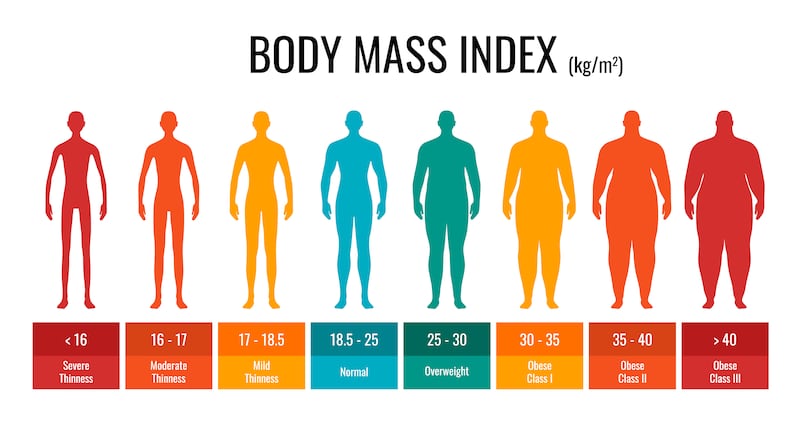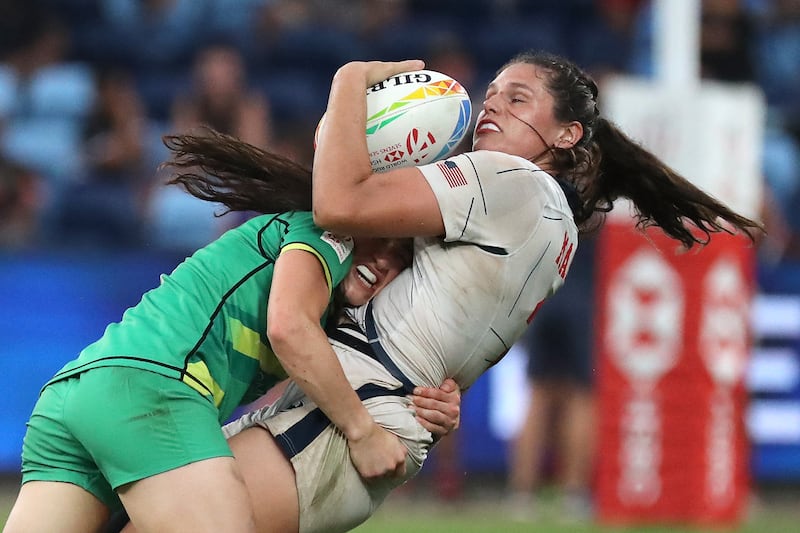Move over, body mass index. Make room for roundness – to be precise, the body roundness index.
The body mass index, or BMI, is a ratio of height to weight that has long been used as a medical screening tool. It is one of the most widely used health metrics, but also one of the most reviled, because it is used to label people overweight, obese or extremely obese.
The classifications have been questioned by athletes including American Olympic rugby player Ilona Maher, whose BMI of 30 technically puts her on the cusp of obesity. “But alas,” she said on Instagram, addressing online trolls who tried to shame her about her weight, “I’m going to the Olympics and you’re not.”
The formula was developed nearly 200 years ago and was never intended for medical screening.
READ MORE
“Based on BMI, Arnold Schwarzenegger, when he was a bodybuilder, would have been categorised as obese and needing to lose weight,” says Dr Wajahat Mehal, director of the metabolic health and weight-loss programme at Yale University. “But as soon as you measured his waist, you’d see, ‘Oh, it’s 32 inches’.”

So, welcome a new metric: the body roundness index. BRI is just what it sounds like – a measure of how round or circle-like you are, using a formula that takes into account height and waist, but not weight.
It’s a formula that may provide a better estimate of central obesity and abdominal fat, which are closely linked to an increased risk of developing type-2 diabetes, hypertension and heart disease, unlike fat stored on the buttocks and thighs.
A paper published in JAMA Network Open earlier this year was the latest in a string of studies to report that BRI is a promising predictor of mortality. BRI scores generally run from 1 to 15 – most people rank 1-10.
Those with BRI scores of 6.9 and up – indicating the roundest bodies – were at the highest risk of dying from cancer, heart disease and other illnesses. Their overall mortality risk was almost 50 per cent greater than those with BRIs of 4.5-5.5, which were in the midrange of the sample, while those with BRI scores of 5.46 to 6.9 faced a risk that was 25 per cent higher than those in the midrange.
But those who were least round were also at elevated risk of death – people with BRI scores under 3.41 also faced a mortality risk that was 25 per cent higher than those in the midrange, the study found.
[ Is BMI good for your health?Opens in new window ]
The paper’s authors suggested that the lower scores, seen mostly in those 65 and older, might have reflected malnutrition, muscle atrophy or inactivity.
“BMI cannot distinguish body fat from muscle mass,” Wenquan Niu, who works at the Center for Evidence-Based Medicine at the Capital Institute of Pediatrics in Beijing and was a senior author of the paper, writes in an email. “For any given BMI, fat distribution and body composition can vary dramatically.”
Indeed, writes Niu, “when BMI is used to frame risk, it often overestimates risk for muscular athletes, whereas it underestimates risk for older people with muscle mass that’s been replaced by fat”.

The fat stored in the abdominal cavity is critically important, as it surrounds internal organs such as the liver, and contributes to insulin resistance and glucose intolerance that often precede type-2 diabetes. It also fosters high blood pressure and lipid abnormalities that can lead to heart disease and death. “Excessive visceral fat deposition is just like a silent killer lurking in our body, which can sneak up on a person over years with few noticeable symptoms, especially among apparently lean people,” says Niu.
BRI is the brainchild of mathematician Diana Thomas, now a professor at the US Military Academy in West Point, New York. She first described it in a 2013 paper in the journal Obesity. Although BMI is grounded in the geometry of a cylinder, Prof Thomas said she was looking in the mirror one day and thought to herself: “I’m not a cylinder – I’m kind of more an egg. I have hips that make me more like an egg. How do I capture that?
“In pre-calculus, you learn about eccentricity – how close to a circle you are. Different people can be categorised as different ellipses. Some of us are more spherical. Some are closer to a circle. Someone who’s lean and mean is less of a circle.”
[ Doctors weigh in on importance of BMI in health outcomesOpens in new window ]
Thomas’s paper included a graphic illustration worth the proverbial 1,000 words. It depicted three figures: a lean man who is 5ft 8in and has a 27-inch waist; a muscular man who is 5ft 6in with a 29-inch waist; and one with more fat than the others who is 5ft 6in with a 36.6-inch waist. Each had a BMI of 27.
Other researchers investigated the idea. A 2016 study that compared BMI with blood pressure and blood work, for example, found that the measure was a poor match for health status.
Nearly half of people deemed overweight, as defined by having a BMI of 25-29.9, and nearly one-third of those said to be obese – a BMI of 30 or above – were actually in good metabolic health. Thirty per cent of those with a BMI of 18.5 to 24.9, which is deemed a healthy weight, were actually in poor metabolic health.

Physicians tend to agree that BMI is a crude measure that doesn’t capture variations in body shape, composition, muscle mass and bone density.
“There’s extreme variation in the population in the degree of muscularity of people, even those of the same weight,” says Dr Steven Heymsfield, a professor of metabolism and body composition at Louisiana State University’s Pennington Biomedical Research Center.
“The percentage of fat can vary from 10 per cent to 40 per cent among people of the same BMI, age and sex,” says Heymsfield. “The BRI is a way of capturing these variations.” – This article originally appeared in the New York Times
- Sign up for push alerts and have the best news, analysis and comment delivered directly to your phone
- Join The Irish Times on WhatsApp and stay up to date
- Listen to our Inside Politics podcast for the best political chat and analysis



















